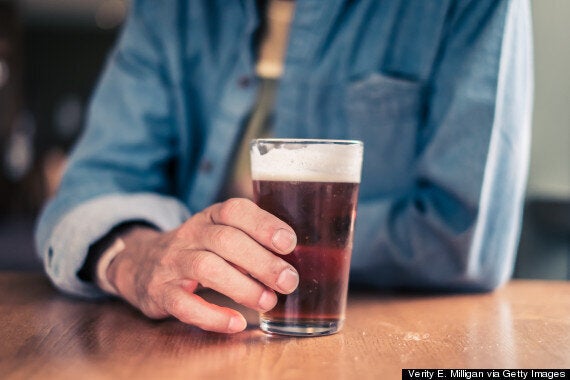Red-faced boozers who look as if they enjoy a tipple or two are actually less able to tolerate alcohol and need to watch their blood pressure, research has shown.
A study found that the risk of alcohol-related hypertension, or high blood pressure, was greater in people who exhibit a warm glow after drinking.
The risk was significantly increased when "flushers" consumed more than four drinks per week.

The rosy-cheeked, often portly, drinker has long been a figure of fun and one of the cartoonist's favourite characters.
But the new research from Korea suggests that flushing red after a drink is no joke.
"Facial flushing after drinking is always considered as a symptom of high alcohol sensitivity or even intolerance to alcohol, unless a patient is taking special medicine," said lead researcher Dr Jong Sung Kim, from Chungnam National University School of Medicine.
"The facial flushing response to drinking usually occurs in a person who cannot genetically break down acetaldehyde, the first metabolite of alcohol.
"To my knowledge, there has been no detailed research that has analysed the relationship between drinking and hypertension while considering individual responses to alcohol.
"Our results indicate that hypertension associated with drinking has a lower threshold value and higher risk in flushers than in non-flushers. After adjusting for age, body mass index, exercise status, and smoking status, the risk of hypertension was significantly increased when flushers consumed more than four drinks per week. In contrast, in non-flushers, the risk increased with consuming more than eight drinks per week."
See Also:
Many Unaware Of Link Between Alcohol And Cancer, Says Study
Binge Drinking: How Type Of Wine Glass Influences How Much Alcohol You Pour
The team, whose findings appear online in the journal Alcoholism: Clinical & Experimental Research, examined the medical records of 1,763 men, including 288 non-drinkers, 527 flushing drinkers, and 948 non-flushing drinkers.
The risk of high blood pressure related to alcohol consumption was compared in flushers and non-flushers.
Facial flushing after drinking may potentially serve as a marker of hypertension risk associated with alcohol, said Dr Kim.
"Our research findings suggest that clinicians and researchers should, respectively, consider evaluating their patients' flushing response to alcohol as well as drinking amount in a daily routine care, and researching hazard by drinking," he added.